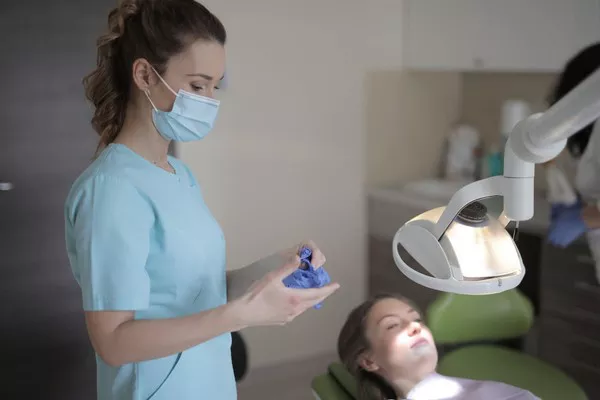Teeth whitening has become increasingly popular as more people strive for a brighter smile. One common method for achieving whiter teeth is the use of teeth whitening strips. However, many individuals are unsure about the proper oral care routine to follow before applying whitening strips. In this comprehensive guide, we will explore the question – do you brush before whitening strips? We’ll provide valuable insights and recommendations on the ideal oral care routine to maximize the effectiveness of teeth whitening strips.
Understanding Teeth Whitening Strips
What Are Teeth Whitening Strips?
Teeth whitening strips are thin, flexible strips coated with a bleaching agent, usually hydrogen peroxide or carbamide peroxide. These strips adhere to the front surface of the teeth and help remove stains, resulting in a whiter smile.
How Do Teeth Whitening Strips Work?
The active ingredients in teeth whitening strips penetrate the enamel and break down the molecules responsible for tooth discoloration. This process effectively removes surface stains and restores the natural color of the teeth.
The Importance of Oral Care Routine
Maintaining a good oral care routine is essential for overall dental health and maximizing the effectiveness of teeth whitening treatments. Regular brushing, flossing, and rinsing with mouthwash help remove plaque, prevent tooth decay, and ensure optimal oral hygiene.
Brushing Before Whitening Strips: Pros and Cons
Brushing Before Whitening Strips:
Pros Brushing your teeth before applying whitening strips offers several benefits:
- Better Whitening Results Brushing your teeth before using whitening strips ensures that your teeth are free from food particles, plaque, and surface stains. This allows the whitening agents in the strips to make direct contact with the teeth, enhancing their effectiveness and providing more consistent results.
- Enhanced Whitening Agent Penetration Brushing helps remove the thin layer of biofilm called pellicle that naturally forms on the teeth throughout the day. By removing this film, whitening agents can penetrate the enamel more effectively, leading to better whitening results.
- Improved Oral Hygiene Brushing before applying whitening strips promotes good oral hygiene by removing bacteria and plaque from the tooth surfaces. This reduces the risk of tooth decay and gum disease, ensuring a healthier mouth overall.
Brushing Before Whitening Strips:
Cons While there are advantages to brushing before using whitening strips, there are also considerations to keep in mind:
- Tooth Sensitivity Brushing vigorously or using abrasive toothpaste can potentially cause tooth sensitivity, making it uncomfortable to apply the whitening strips immediately afterward. If you have sensitive teeth, it may be advisable to use a soft-bristle toothbrush and gentle brushing technique.
- Potential Gum Irritation Aggressive brushing can irritate the gums, leading to discomfort or even bleeding. It is important to brush gently and use a toothbrush with soft bristles to minimize the risk of gum irritation.
The Ideal Oral Care Routine Before Whitening Strips
Step 1: Brushing
To maximize the effectiveness of teeth whitening strips, it is generally recommended to brush your teeth before application. Follow these guidelines for proper brushing:
Choose the Right Toothbrush and Toothpaste Select a soft-bristled toothbrush and a non-abrasive toothpaste. Avoid using whitening toothpaste before applying whitening strips, as it may contain abrasive ingredients that could interfere with the whitening process.
Brush Thoroughly but Gently Brush your teeth for at least two minutes, covering all tooth surfaces, including the front, back, and chewing surfaces. Use gentle, circular motions to avoid gum irritation and prevent enamel wear.
Pay Attention to the Gumline Make sure to clean along the gumline to remove any plaque or bacteria that may have accumulated. A clean gumline helps ensure that the whitening strips adhere properly to the teeth.
Step 2: Flossing
Flossing is an essential step in your oral care routine that should be done before applying whitening strips. Flossing removes debris and plaque from between the teeth and along the gumline, which can hinder the whitening process if left untouched.
Use Proper Flossing Technique Gently guide the floss between each tooth, curving it around the base of the tooth in a C-shape. Be thorough but gentle to avoid irritating the gums. Repeat this process for each tooth, using a fresh section of floss for each space.
What is the proper way to use whitening strips?
To use whitening strips effectively, follow these general steps:
Brush and floss your teeth:
Start by ensuring that your teeth are clean and free of any food particles or plaque. This allows the whitening strips to adhere properly to your teeth.
Read the instructions carefully:
Different brands of whitening strips may have specific instructions, so it’s important to read and understand them before using the product. Pay attention to the recommended duration of use, frequency, and any precautions mentioned.
Apply the strips:
Take one strip and carefully peel off the backing. Align the strip with your gum line and apply it to your teeth, pressing gently to ensure good contact. Repeat this process for all the teeth you wish to whiten. Some kits come with separate strips for the upper and lower teeth, while others have a universal strip that can be used for both.
Wear the strips for the recommended time:
Whitening strips need to be worn for a specific amount of time to be effective. The duration can vary depending on the brand and product. Commonly, it ranges from 15 minutes to a few hours. Avoid wearing the strips longer than instructed, as it may lead to tooth sensitivity.
Remove the strips and clean your mouth:
Once the recommended time has passed, remove the strips gently and dispose of them. If there is any residue left on your teeth, rinse your mouth thoroughly with water or brush your teeth lightly to remove it.
Follow up with regular oral care:
After using whitening strips, it’s advisable to maintain good oral hygiene practices. Brush your teeth twice a day, floss regularly, and consider using a fluoride mouthwash. This helps in maintaining the results and overall dental health.
It’s important to note that these steps provide a general guideline. Always refer to the specific instructions provided by the manufacturer of the whitening strips you are using for the most accurate and safe usage information. If you have any concerns or experience excessive tooth sensitivity or discomfort, consult with your dentist.
Related Topics:





























